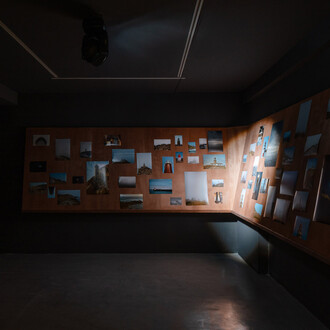In this show we can see two main blocks:
In the first series, lifeless bodies of giant birds appropriated from baroque still life paintings rest in XVIII century Dutch landscapes. Throughout Art History, both the still life and the landscape have always been poorly appreciated pictorial genres and creating new work by the appropriation of these, the artist tries to magnify them in some way. This idea was also treated by the artist in his series "Fallen from the sky" (2009-2015) in which the same giant birds appear on the floor of different modern war scenes after being launched as missiles.
These works also drink from several classics of literature such as Herbert George Wells and his science fiction novel "The food of the gods" in which two British scientists create a food that causes an excessive growth in people, animals and plants. The novel "The Fatal Eggs" by the Soviet writer Mikhail Bulgakov, set in the Moscow of 1928 is another clear example of this. In the book, Professor Pérsikov, discovers a ray that accelerates the growth that is later used by the state to raise chickens as an epidemic ended with all poultry farming in the country. Unfortunately, a chain of errors leads to tragedy.
In summary, the works contain a lot of references to the film noir of the 50's, literature and comics. They also have a playful side, a surreal touch and a bit of irony.
The series of unpublished drawings of Oscar Seco presented for Apertura Madrid Gallery Weekend 2017, are also built from the appropriation of different elements that the artist decontextualizes and combines to create a new reality.
The drawings, made as if they were old engravings, combine Dutch landscapes from the XVIII century, animals extracted from bestiaries of the XVII century and fantastic beings from "The book of imaginary beings" by Jorge Luis Borges. Bestiaries are compendiums of beasts that became very popular during the Middle Ages in the form of illustrated volumes describing animals, plants and organic elements.
Oscar Seco gets his inspiration from several naturalists as the Jesuit priest Athanasius Kircher (1602-1680) and the Swiss naturalist Konrad Gessner with his book "Curious Woodcuts of Fanciful and Real Beasts", their sketches remind us of the famous Dürer’s Rhinoceros, clear example of the imaginary they had at the time about exotic animal species. In reference to "The book of the imaginary beings", Borges makes a compilation of strange beings that arise from the human invention in different mythologies, cultures and times. Mockup: Oscar Seco created this mockup in 2014, it hasn´t been exhibited before and the artist designed the piece as another fantastic scene in which a submarine, which is actually a giant squid reaches a Nazi military base. Many of the elements are handmade and hand painted by the artist.















